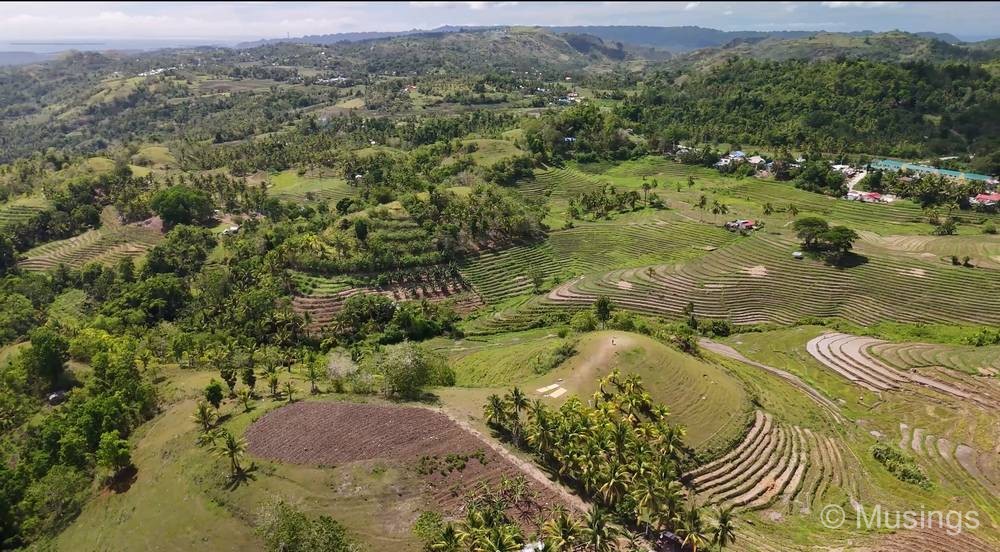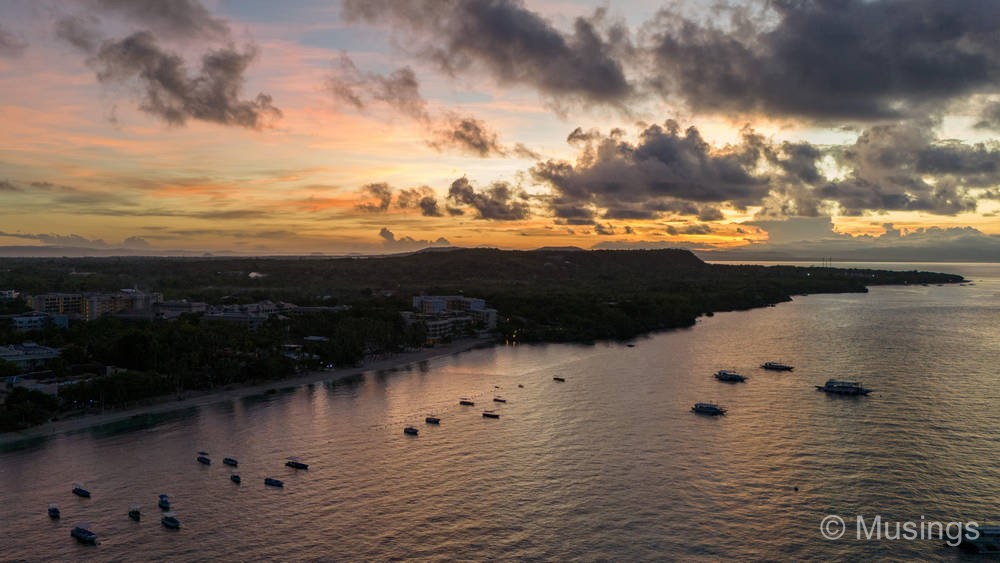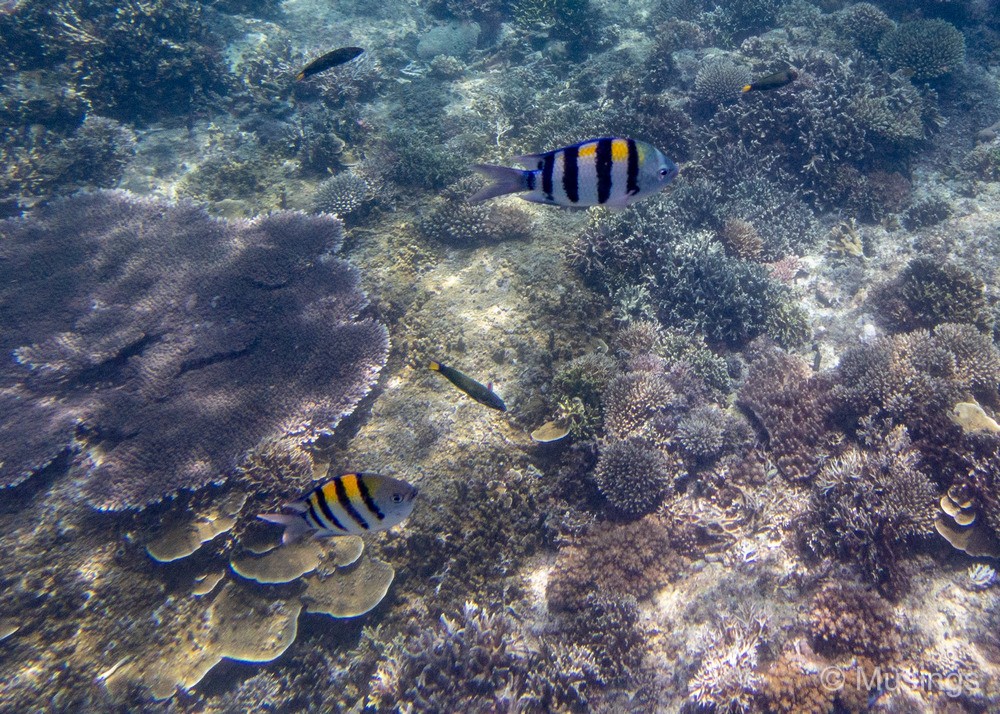The first of the last two posts in this series covering our 11 day trip to Cebu, and this one again will be about the image and video capturing experience of the trip!
Since 2022 when pandemic restrictions were lifted and we started traveling again, I’ve been taking less and less pictures using interchangeable lens camera systems ILCs. Smartphone imaging has now come to the point where there’s little advantage to using ILCs if all you’re doing is to post to social media. And at this stage now, the pictures that I get out of the Samsung S24 Ultra are invariably sharp with colors well-judged, and often always immediately usable for posting without further edits to Facebook.
However, the one area where the S24 Ultra still cannot handle well is action photography, particularly the kind that we were doing – i.e. snorkeling. It fared well enough during our Canyoneering outing since it was the water canyon was a freshwater river and pretty shallow in most parts. The S24 Ultra could easily handle a dunking if we’d dropped the camera into the shallow river, though I had the camera nonetheless in an underwater case for added bump protection. Trying to use the S24U while snorkeling in the sea was a different matter: I could not get it to properly judge color temperature while underwater, and the camera was just too fiddly to use while trying to swim. So, I gave up using the S24U altogether during our snorkeling outings.
The two other most important equipment this trip were the DJI Mini 4 Pro, and DJI Action 3. Most of the snorkeling videos we took were on the Action 3, and the videos were remarkably stabilised, with the little camera accurately judging color temperatures while underwater and instantly switching back to the correct temperature when I resurfaced. I saw most visitors and our guides using GoPros, and a few of the latter were particularly interested in my DJI Action 3, with one remarking how crisp the video footage from it looked. It’s long lasting battery also meant that I could record an entire day’s activities, playback a fair bit to see what I’ve taken, and still have plenty of battery power left to spare.
The DJI Mini 4 Pro captured all the lovely aerial photos and videos for this trip. I was better able to judge ambient lighting this trip too, and ensured I mounted the correct ND filter each time, excepting over Loboc River on Day 08. And excepting the flight through Bilar Man-Made Forest, I was largely flying the drone through open terrain, so the DJI Mini 3 Pro would have probably fared as well even with its somewhat less complete obstacle sensing and avoidance systems, were it not for the fact that the RC controller was in repair.
The Olympus TG-5 was critical in my being able to capture those great pictures of marine life during our 2019 Maldives trip. But on this trip – apart from the whale shark and sardine run activities – we saw less interesting marine life this time during our snorkeling outings. That meant that I didn’t get as much memorable pictures on this underwater camera this time. Moreover, while the TG-5 is capable of capturing 4K video, the footage I got from it while snorkeling suffered from so much camera shake that they were largely unusable.
As I feared too, the RX100 VII finally saw very little use. Apart from a couple of pictures while on the incoming flight into Cebu and at the Tarsier Sanctuary where I needed the optical zoom, the RX100 didn’t really see any other use. It’s a lovely compact capable of /getting great pictures, just that I need to intentionally use the camera! Oh well; our next trip in December.
And lastly, the Samsung Tab S9 was used again for blogging on the go. It came out whenever we were waiting for food to be delivered, or at the airport waiting for our ride home. I don’t think I could have done this much blogging real-time were it not for this tablet!
Photo and video numbers-wise, here’s the tally post-trip:
Sony RX100 VII: 67 .ARW RAW format (keeping 0.8GB pictures)
Samsung S24 Ultra: 1,956 photos in JPG (keeping 1,626 photos/9.76GB pictures) + 70 videos (12.7GB)
Samsung S23 Ultra: 201 photos in JPG (0.734GB) + 47 videos (12.21GB)
DJI Action 3: 50 photos in JPG (0.5GB) + 85 videos (39.4GB)
DJI Mini 4 Pro: 32 photos in DNG+JPG (2.93GB) + 59 videos (123GB)
Olympus TG-5: 343 photos in ORF (3.92GB) + 15 videos (4.66GB)
When put into a table of comparison of photos taken using cameras and smartphones over our family trips since 2017:
| Trip | Photos taken | Videos taken | Storage used | Photos kept | Keeper rate |
|---|---|---|---|---|---|
| Western Australia (2017) | 5,828 | No records | 77GB | 3,331 | 57.2% |
| Taiwan (2018) | 7,422 | 182 | 148GB | 4,200 | 56.5% |
| Maldives (2019) | 2,320 | 137 | 82.4GB | 1,518 | 65.4% |
| Chūgoku & Kyushu (2019) | 4,951 | 149 | 144GB | 3,283 | 66.3% |
| Kanagawa & Hokkaido (2019) | 7,652 | 216 | 309GB | 5,076 | 66.3% |
| Kansai (2022) | 7,683 | 429 | 196.2GB | 5,539 | 72.9% |
| Hanoi (2023) | 3,137 | 87 | 46.2GB | 2,090 | 66.6% |
| Chubu-Kanto (2023) | 11,663 | 372 | 146.93GB | 8,042 | 68.9% |
| Cebu (2024) | 2,649 | 276 (including drones) | 192.5GB | 2,319 | 87.5% |
Generally speaking, we took much fewer pictures this trip compared to the most immediately equivalent trip last year in Hanoi. However, the actual storage space taken up for pictures and videos far exceeds Hanoi’s: on account of the huge number of action cam videos [39.4GB] and drone videos [a whopping 123GB!].



For mobile connectivity, we bought three connections for the trip: two eSIMs for the wife’s and my phones, and a backup nano-SIM that I kept on the Samsung Tab S9. All worked about as well as they were expected to, excepting the places were connection quality weren’t as good, i.e. at Bohol and Malapascua islands.
Finally, my equipment takeaways for the next trip:
Be deliberate in photo-taking if the RX100 VII is coming along.
Samsungs S24 Ultra and Tab S9 for the win!
The DJI Action 3 and DJI Mini 4 Pro are excellent imaging devices… when there is opportunity to use them.
Bring along a larger capacity portable drive to back-up photos and videos, particularly if there’s drone videography going about. The 5 year old Western Digital 512GB SSD has normally been sufficient as to do daily back-ups when I travel: but this time, it almost wasn’t sufficient!
Next post:our final notes!